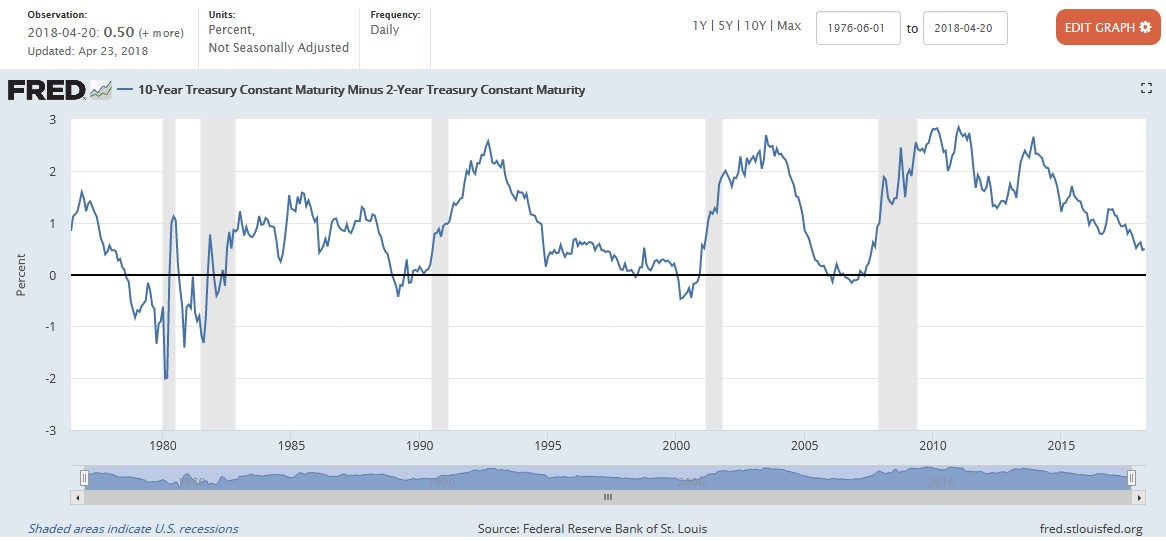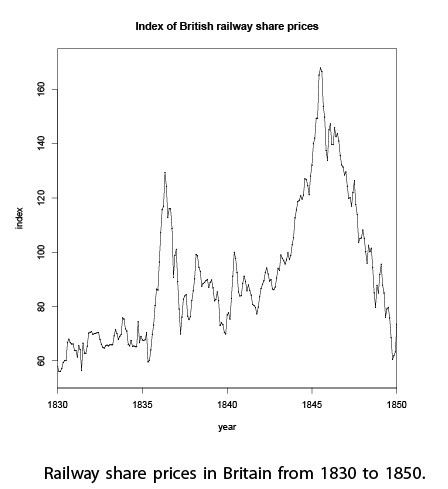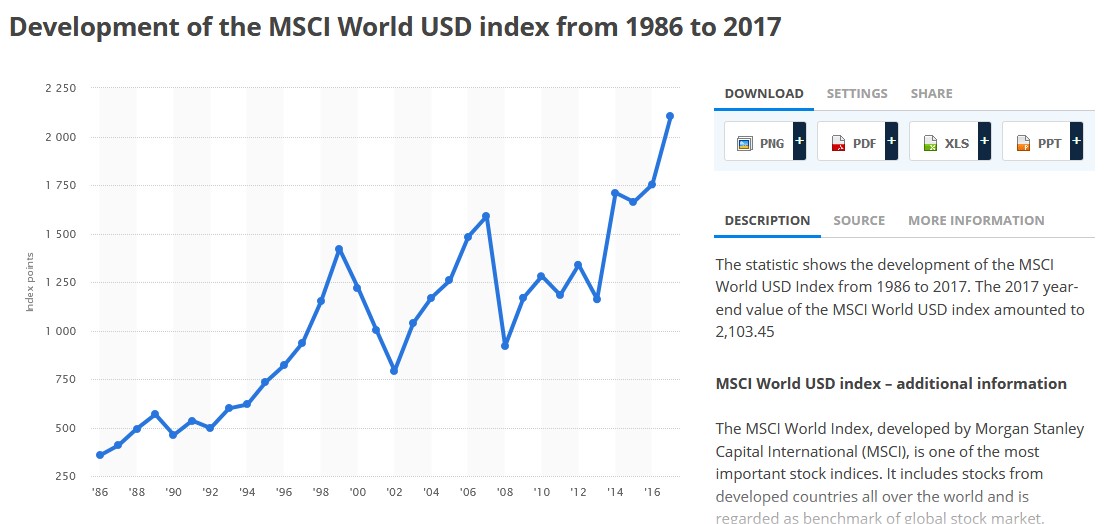At more than 9-years of age, the U.S. bull market is looking long in the tooth. But that alone does not condemn it to an automatic death.
Recent history shows us that bull markets mostly die not of old age, rather, of fright. Nearly 70 percent of bull markets since WWII have ended in anticipation of economic contractions.
In late 2017, Mutual fund giant Vanguard Group warned of a 70-percent chance of a market correction due to flattening yield curves. The spread between 10-and 2-year Treasury yields has continued to flatten and recently dipped to an 11-year low.
Recessions tend to follow shortly after a period of sustained flattening of the yield curve and, sadly, that appears to be where we currently stand.
NB: Shaded areas indicate U.S. recessions

(Click to enlarge)
Source: Federal Reserve Bank of St. Louis
That's a serious red flag that is further compounded by ongoing fear in the stock market.

(Click to enlarge)
Source: CNN Money
So then, are we staring a looming recession with a stock market crash at the end of the dark tunnel?
That's hard to say because the American economy has evolved into a more traditional expansion cycle similar to the ones that characterized market tops in the '60s and '70s. That makes it harder for crashes to happen in lieu of things like major asset bubbles. They say hindsight is 20/20, so we probably just have to wait and see. Related: China’s New Car-Market Rules
At the risk of sounding alarmist, here's a rundown of 5 historical stock bubbles and market crashes.
#1 Railroad Bubble (1840s)

(Click to enlarge)
Source: The Bubble Bubble
The U.K. railroad bubble was a classic case of over-exuberance and speculative frenzy.
The invention of the first steam locomotives in the 1820s ushered in a new era of passenger rail transport that was both revolutionary and life-changing, and investors were quick to leap at the opportunity. Vast sums of money went to finance the buildout of a massive network of railways around the country. Railroad stocks climbed to stratospheric levels.
Talk of too much of a good thing--most rail systems ended up operating well below capacity and railroad stocks suffered a humongous crash shortly thereafter.
#2 Wall Street Crash (1929)

(Click to enlarge)
Source: JB Marwood
The Wall Street stock market crash of 1929 still holds pole position as the worst in U.S. stock history bar none--and it was partly responsible for ushering in the Great Depression of the 1930s.
It was preceded by a decade of great prosperity and many remarkable inventions including the refrigerator, radio, washing machine, phonograph, vacuum cleaner and others. The rapid economic expansion was accompanied by wild speculation in the stock markets and massive debts that eventually culminated into the bubble bursting and the Dow Jones crashing 89 percent on Black Monday.
#3 Nikkei Bubble (1980s)

(Click to enlarge)
Source: Federal Reserve Bank of St. Louis
The Nikkei crash happened in the 1980s shortly after a 3-decade long ‘Economic Miracle’ when Japan was a world leader in the global electronics and automobile industries. But what really caused the crash was excessive liquidity in the banking system and financial deregulation that allowed banks to take on excessive risk including heavily leveraged buyouts of foreign companies. Overconfidence and over-speculation pushed up prices of domestic stocks and real estate.
Related: Is Silver Poised For A Massive Break Out?
In 1989, the Bank of Japan finally decided to tighten its monetary policy leading to the Nikkei popping 50 percent. The Japanese stock market has never fully recovered to-date.
#4 Dot-com Bubble (2000)

(Click to enlarge)
Source: Federal Reserve Bank of St. Louis
The Dotcom crash of 2000 is perhaps one of the finest examples of what fad-based investing can eventually lead to.
The period of 1995-2000 was characterized by investors pulling out all the stops and throwing their money at flashy internet companies. All that was made possible by an abundance of venture capital funding and the creation of thousands of Dotcom startups, most of which had little to show in the way of revenues let alone profits. The Nasdaq quintupled in the most rapid expansion of the stock market in history.
Needless to say, investors eventually woke up to the harsh reality, leading to spectacular crash and a trillion dollars wiped from the markets over a period of two years.
#5 Credit Crisis (2007/2008)

(Click to enlarge)
Source: Statista
The blame for the credit crisis of 2007/2008 falls squarely on greedy bankers and market speculators. The bubble was characterized by excessive sub-prime lending: too much money sloshing around real estate and unrealistically high property prices.
Eventually, the value of complex mortgage-backed securities tanked and sunk the global stock markets into one of the worst bear markets since the Great Depression.
By Alex Kimani for Safehaven.com
More Top Reads From Safehaven.com:

















